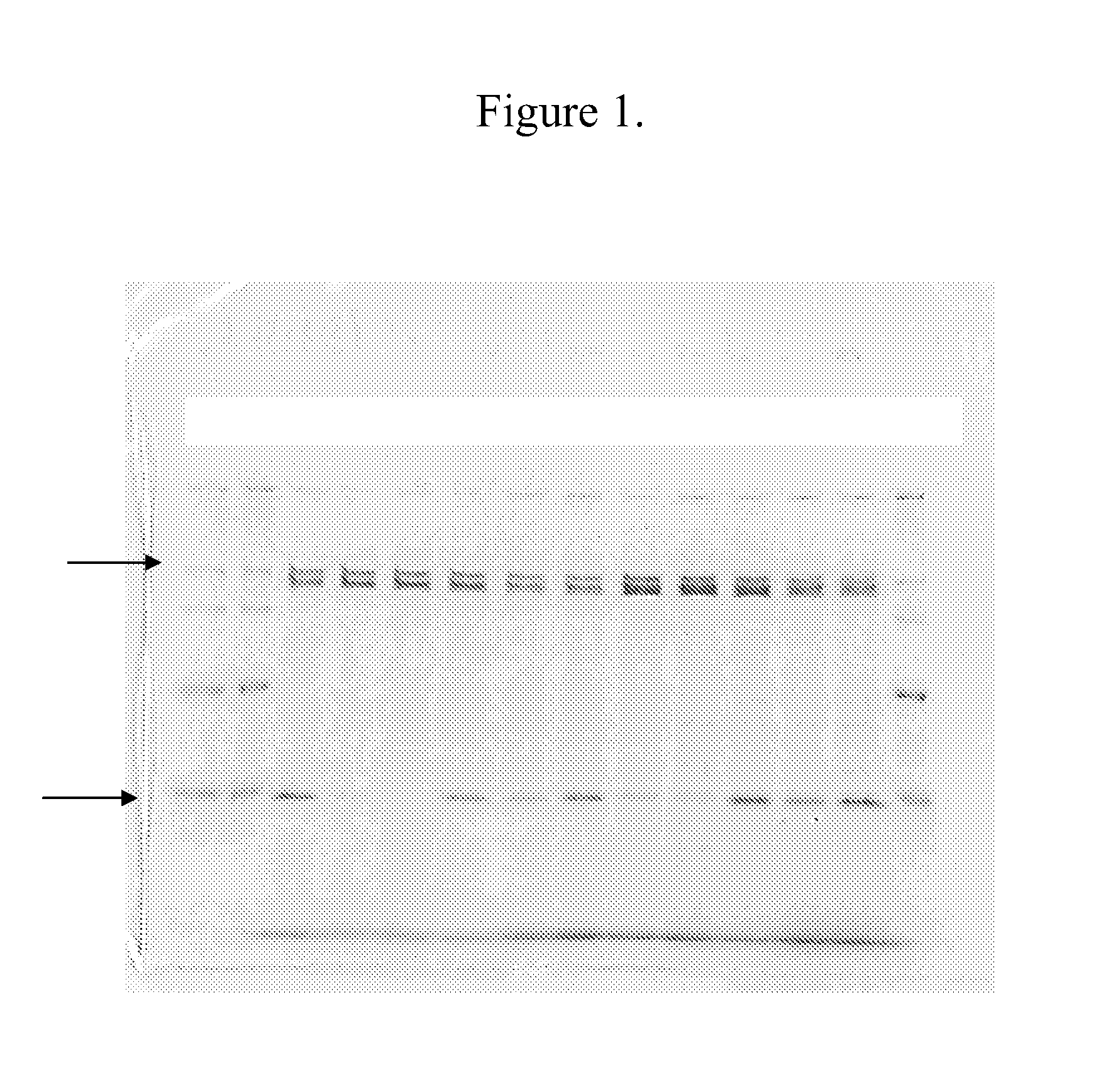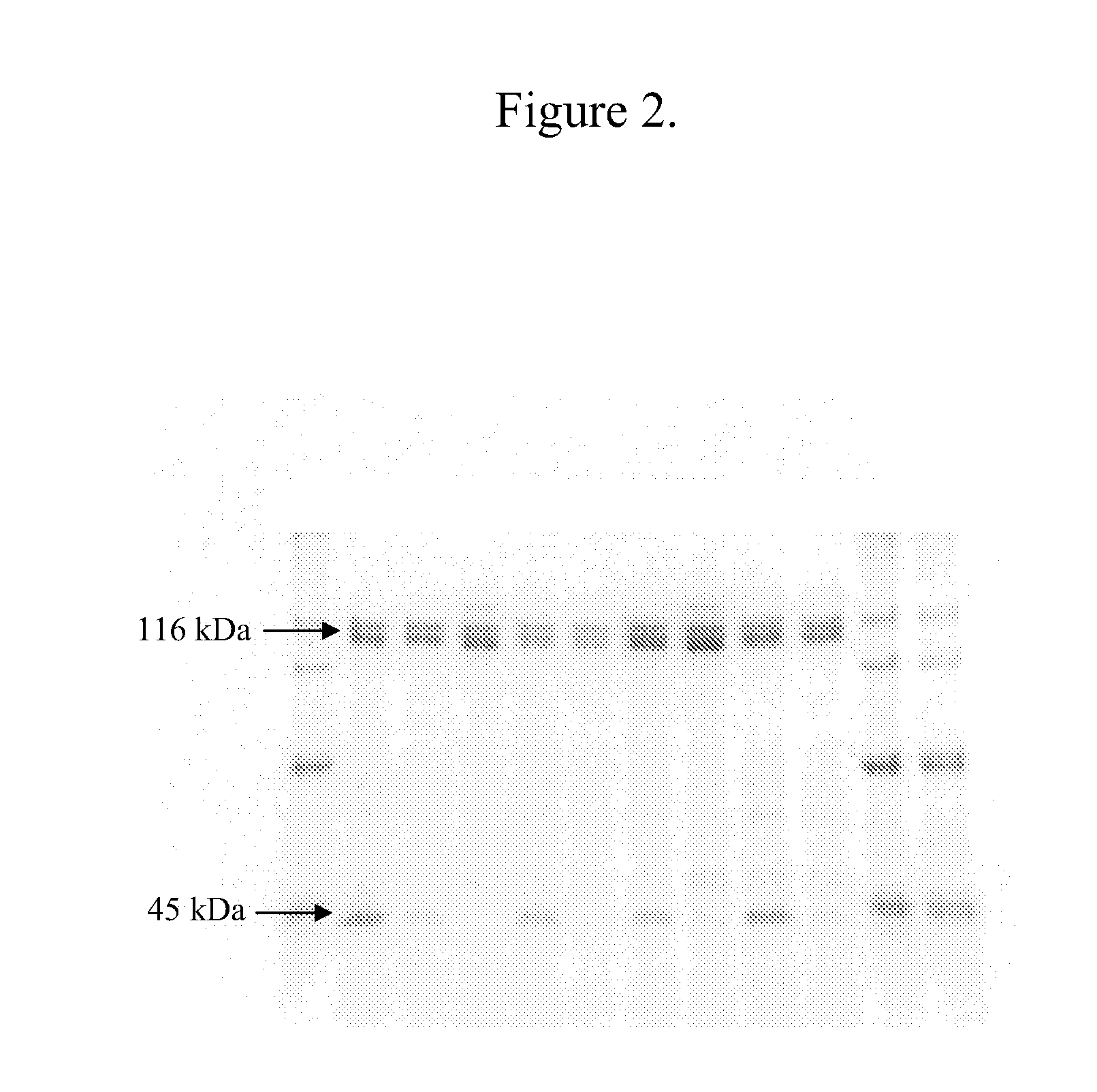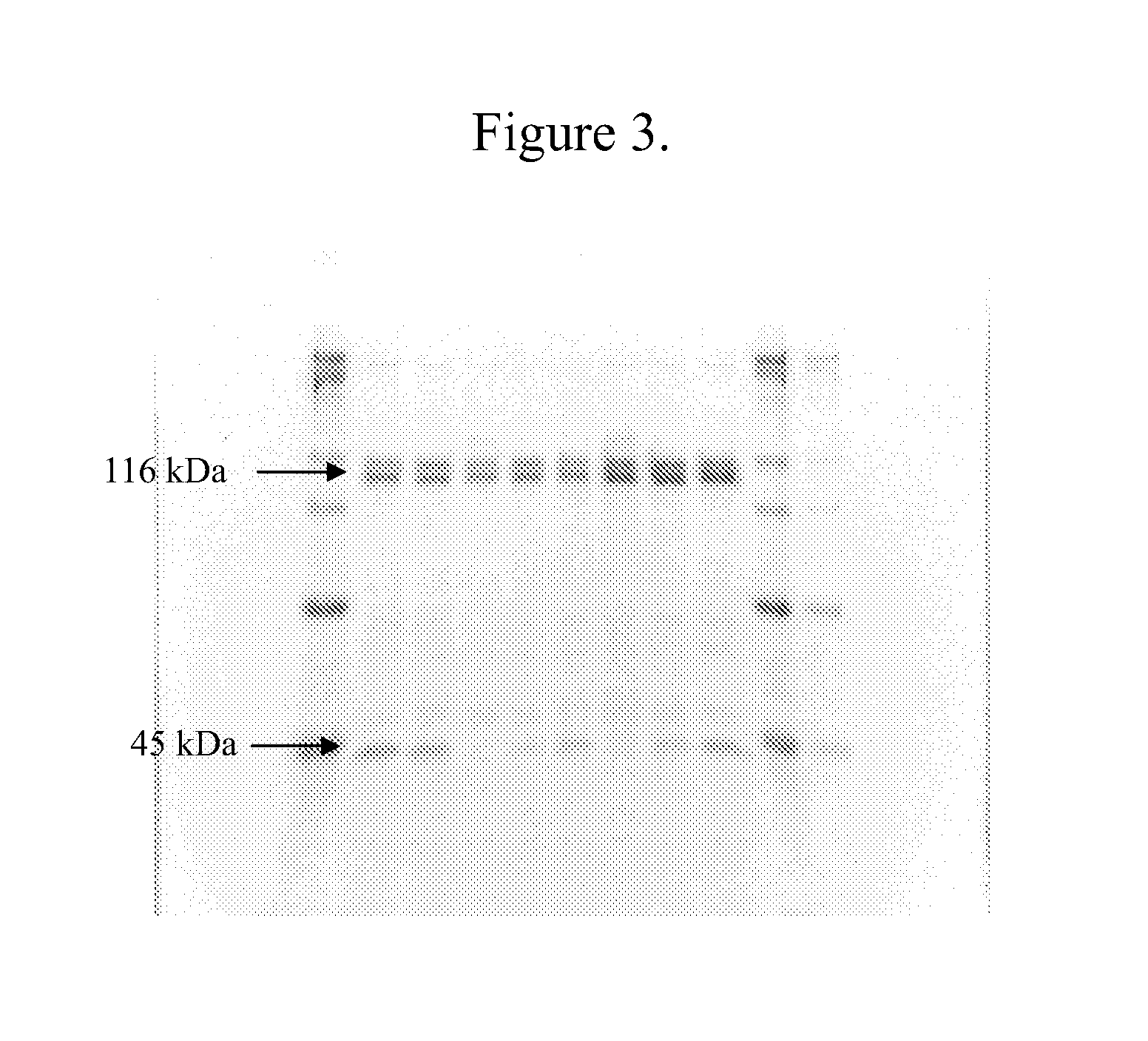Compositions and methods for producing clostridial collagenases
- Summary
- Abstract
- Description
- Claims
- Application Information
AI Technical Summary
Benefits of technology
Problems solved by technology
Method used
Image
Examples
example 1
Preparation of an Animal Material Free Cell Bank
[0151]The starter cell culture was Clostridium histolyticum ATCC 21000, strain 004, which was originally created with bovine-derived materials. The cells were first grown in animal material free medium (M #1, Table 1). Briefly, the recipe includes: phytone, 51.5 g, yeast extract 8.5 g, 1000 mL water. The pH was adjusted to 7.30 with NaOH, and sterilized at 121° C. for 20 min. 1 mL of the starting material was then inoculated into 300 mL of media #1 and incubated for 24 hours at 37° C. (1st culture). 3 mL of the 1st culture was transferred to 1000 mL of media #1 and incubated for 16 hours (2nd culture). The 2nd culture was then centrifuged aseptically. The pellet was re-suspended with 5 mL media #1 and 5 mL 20% glycerol. The aliquots of cell suspension were frozen gradually and stored at −80° C.
example 2
Fermentation Process
[0152]Clostridium histolyticum ATCC 21000, strain 004 was inoculated into the starting culture with medium #1 or #2 and incubated at 37° C. for 16 hr. 10 mL of the starting culture (M#1 or #2) and 10 mL Mg / vitamin solution (Example 3) was then transferred to each liter of M#3 or #4 or any variation to either M#3 or M#4 specified in the examples and incubated for 22 hours. Clostridium histolyticum grew well with the OD600 reaching >2.5.
TABLE 1Media recipes and preparationM #1M #2M #3M #4Phytone15.45g103gVeggitone15.45g103gYeast extract2.55g2.55g17g17gKH2PO41.92g1.92gK2HPO41.25g1.25gNa2HPO43.5g3.5gNaCl2.5g2.5gvol of water0.3L0.3L1L1L
example 3
Preparation of MgSO4 / VF Solution
[0153]The solution was prepared separately, by dissolving 8 g MgSO4, 1.2 g ferrous sulfate, 0.05 g riboflavin, 0.1 g Niacin, 0.1 g Calcium pantothenate, 0.1 g pimelic acid, 0.1 g pyridoxine, and 0.1 g thiamine in 1100 mL water. The solution was sterilized with 0.22 um filtration.
PUM
| Property | Measurement | Unit |
|---|---|---|
| Fraction | aaaaa | aaaaa |
| Fraction | aaaaa | aaaaa |
| Fraction | aaaaa | aaaaa |
Abstract
Description
Claims
Application Information
 Login to View More
Login to View More - R&D
- Intellectual Property
- Life Sciences
- Materials
- Tech Scout
- Unparalleled Data Quality
- Higher Quality Content
- 60% Fewer Hallucinations
Browse by: Latest US Patents, China's latest patents, Technical Efficacy Thesaurus, Application Domain, Technology Topic, Popular Technical Reports.
© 2025 PatSnap. All rights reserved.Legal|Privacy policy|Modern Slavery Act Transparency Statement|Sitemap|About US| Contact US: help@patsnap.com



